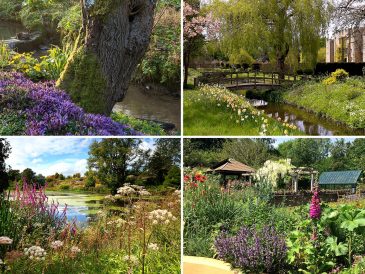Synergistic agriculture, or rather the philosophy of life related to it, was born in the 30s of the 20th century; the founding father, or the one who spread the teachings related to this type of cultivation, was the Japanese agronomist Masanobu Fukuoka, who first applied the principle of natural agriculture of non-action.
Later, in the 1960s, this agricultural technique was further developed and disseminated by the Spanish farmer Emilia Hazelip, who applied and considerably deepened the principles of permaculture of Masanobu Fukuoka, also through books published in the United States.
The Concept
What makes this type of cultivation a philosophy of life, as well as a technique that is absolutely respectful of the environment, and therefore very much appreciated by those who wish to adopt an ecological attitude, is the concept that underlies the action, that is to say the non-action of man in the process of growth and production of the species subjected to cultivation.
The result of this technique is a garden that does not need to be hoeled or fertilized, a land in which vegetables of all kinds grow in all stages of growth; this may seem like a utopia, but what should be clear, and what should not lead us to doubt, is the undisputed action of Mother Nature.
In synergistic agriculture, everything is based on the principle of synergy, on the union that makes the strength, or on the natural collaboration of the single part with the others, for the realization of the common objective.
The vegetable garden is, in reality, an artificial system, that is to say, created by man on the basis of his own needs; through synergistic horticulture everything tends to the creation of a natural system in which man intervenes to the minimum, a process in which nothing is wasted or conditioned beyond nature.
It is a new way of understanding the relationship between plants and soil, a concept far removed from modern intensive agriculture as well as from organic agriculture; soil and plants, in perfect harmony, work together to create a fertile ground in which agriculture becomes easy.
How to Create a Synergistic Vegetable Garden?
Physically, to create a synergic vegetable garden, it is necessary to cultivate in plots of about 120 cm at the base and 50 cm in height, leaving the surface soil higher than the level of the lawn; this allows to have a non-compacted and always aerated soil.
The 4 fundamental principles of Synergic Agriculture are:
1. Not to Work the Soil
This principle, which may seem strange to those who have always practiced conventional farming, is in fact the most important for the realization of a synergic vegetable garden.
Not working the soil means not plowing or hoeing the soil, so as not to harm the natural balance of the organisms present in the soil, whose activity would be altered by working the soil and therefore its oxygenation.
2.Not Using Fertilizers
Nature is perfectly capable of producing food for the plants present in a given soil. Natural fertilization comes from the permanent organic cover; under the layer of autumn leaves, for example, life proliferates and ideal conditions are created for the growth of species present in the garden.
To achieve this cover in one’s cultivated area, one can use mulching, covering the soil with straw or other biodegradable materials and having perennial, seasonal and spontaneous grasses coexist in the neighborhood.
3.Not Compacting the Soil
This means not trampling it, to allow the micro-ecosystems in the subsoil to exist and proliferate.
4.To Plant At Least 3 Different Plant Species in Each Plot
In order to allow a real synergic activity, it is necessary to have different species coexist in the same area; here the rule says that in each clod we have to sow:
– A legume, necessary because it fixes nitrogen in the soil;
– An Alliaceae (garlic, leek, onion,..), which has natural anti-bacterial properties that will help to clean the environment
– A vegetable from other families
In this area, it is also recommended to plant flowers and herbs, both of which are allies in protecting the garden from pests and fungal diseases; calendula, for example, has recognized beneficial properties and is able to repel the dangerous attacks of many seasonal pests.
There you are! You now know how to do Synergistic agriculture in your garden. So when are you starting? Let us know in the comments below.





